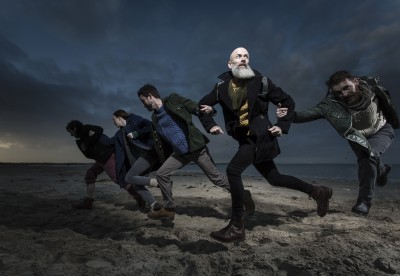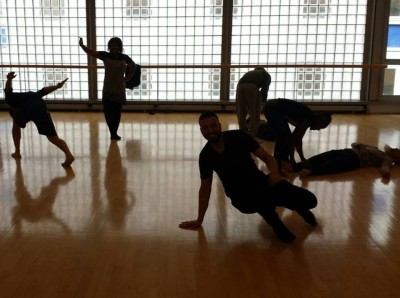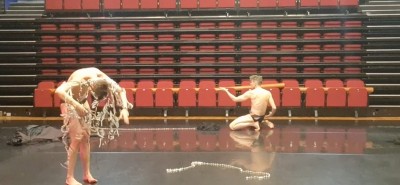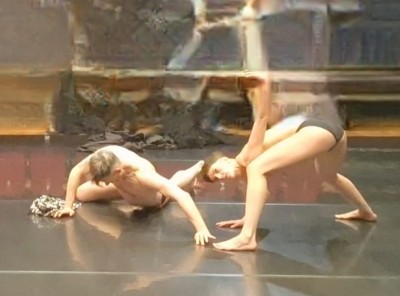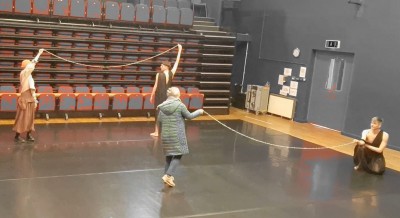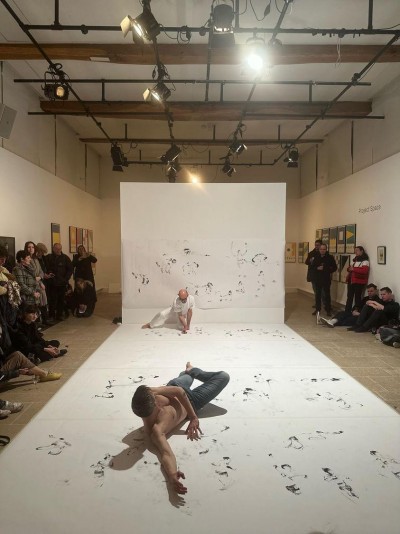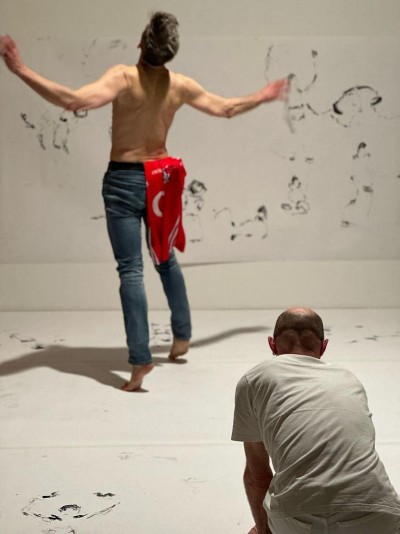Thanks to Patricio Cassinoni for this production trailer
Micro Rainbow Dance Your Freedom Exhibition
As a celebration of the past four years of Micro Rainbow’s Body and Movement Programme for LGBTQI refugees and asylum seekers, we’ve made an exhibition called Dance Your Freedom. The programme’s history is longer than those four years: I connected with Micro Rainbow and started ad hoc workshops and classes as part of The Casement Project in 2015. But the Paul Hamlyn Foundation grant Micro Rainbow received four years ago has allowed a consolidation and expansion of the programme. What was a series of sessions in London, led by a small team of artist-facilitators, this grown to twice-monthly sessions in London, Cardiff and Birmingham led by a skilled and caring group of LGBTQIA dance artists who bring a range of dance and lived experience to their work.
View this post on Instagram
For the exhibition, we worked with Brazil-based curator Leonardo Menezes whom I met when he was part of the Clore Leadership Programme in 2023-24. He has brought his skills to the project by shaping the creative materials we’d gathered into an engaging narrative for visitors to follow. Much of the material has come from Creative Intensives when beneficiaries and members of the Creative Team have worked with invited artists: there are films made with Sam Williams, audio work by Heidi Chiu, photographic art by ….., costumes from the project with drag artist Twiggy as well as testimonials from beneficiaries gathered by Micro Rainbow and by Kate Wakeling as part of her evaluation. As befits the ethos of our programme, the design of the exhibition has had to be flexible since it had to fit into three very different venues in Birmingham, Cardiff and London. That flexibility has been made possible a vibrant graphic design by Kevin and sympathetically installed by the production team, led by production managed Bethany Knowles (plus Julia!).
View this post on Instagram
Each of the launch events have allowed us to celebrate the community of beneficiaries and the creative team with short live performances. We’ve found it a challenge over the years to find the right formats for live performance because we’ve been attentive to the need to safeguard the identities of participants. Because we invited audiences for these launch events, it meant we could offer the protected space of an extended Micro Rainbow family in which we could dance together safely – as we do in the sessions. And it was joyful to see beneficiaries take and enjoy their moment in the friendly spotlight.
I’ve also enjoyed seeing beneficiaries recognise themselves and their friends in the exhibition and I hope they feel the exhibition celebrates their right to visibility and inclusion in these public spaces. It’s been encouraging to hear how visitors have responded to the exhibition. Thanks to Jerry, one of the Birmingham-based Creative Team, we have these vox pops that share some of the reflections:
View this post on Instagram
At the launch in London, I met some of the immigration lawyers who provide legal advice and guidance to the beneficiaries. While I was acknowledging how essential their work is to ensuring beneficiaries find safety in the UK, they talked about how important something like the Body and Movement Programme and other social inclusion activity is, because when faced with a deliberately hostile and dispiriting asylum process, unless an applicant has resilience and a network of support that bolsters confidence and self-esteem, they’ll find it very hard to get through the bureaucratic ordeal. Finding moments that foster joy, creativity, confidence and connection strengthens people psychologically and emotionally for the challenge of the legal process. Part of the aim of the Paul Hamlyn Foundation funding this past four years has been to consolidate, expand and also integrate the Body and Movement Programme into Micro Rainbow’s work. Being able to hear from other experts in the MR community how the programme can fit alongside the elements of legal support and housing has begun to prove how that work of integration is happening.
One of my personal highlights from the exhibition was using the track which Alma Kelliher composed for the end of Butterflies and Bones in The Casement Project and that I danced to in the film we made, I’m Roger Casement. This work with Micro Rainbow originated in an instinct that is artistic and personal. The resources and framing of The Casement Project helped me practically to get something going, that the help and skill of many others (artists, producers, MR staff) now sustain and develop. But in an art form that is so often called ephemeral , Alma’s voice and music on a re-edit of a film Sam Williams made with us last year for a Micro Rainbow Creative Intensive, confirmed that dancing can and does survive and resonate over time.
Ceist Residency Dance Cork Firkin Crane: Tearmann Aiteach/ Queer Sanctuary
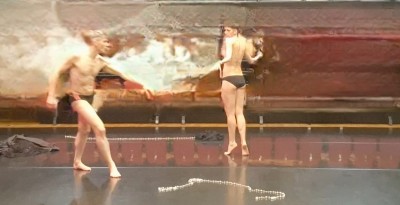 Isabella and I are happy to be able to draw on the resources of an Arts Council Project Award to continue the work of Tearmann Aiteach/ Queer Sanctuary and the investment of time, energy, imagination and relationships that have already made the practice such a resonant and positive experience for me. The Project Award is especially welcome in that it allows us to pay collaborators for their investment in the work but at just under €50,000, the award is not so big that we don’t also rely on the generosity of other supports such as Dance Cork Firkin Crane’s Ceist Residency.
Isabella and I are happy to be able to draw on the resources of an Arts Council Project Award to continue the work of Tearmann Aiteach/ Queer Sanctuary and the investment of time, energy, imagination and relationships that have already made the practice such a resonant and positive experience for me. The Project Award is especially welcome in that it allows us to pay collaborators for their investment in the work but at just under €50,000, the award is not so big that we don’t also rely on the generosity of other supports such as Dance Cork Firkin Crane’s Ceist Residency.
Thanks to the residency, Isabella and I spent a week in March at DCFC reconnecting with movement practice and exploring how our choreographic structure could evolve for the new performance we’re making. The residency gave us time together to connect remotely with our collaborators, like theatre maker and designer Choy Ping Ní Chléirigh Ng. Ping will be creating a digitally enhanced performance space that resonates with the invisible energies of the dancing and provides ways for audiences to witness and/or enter into the dancing sanctuary. And because we’re attentive to care and pleasure in our practice, we also used the time for doing the planning, admin and logistics that we freelance artists so often do outside of “working time” as if that labour wasn’t of a piece with the creative work at hand. Being able to do all of the work in a similar space has helped me to make sure for myself that the approaches and values we’re hoping to embody in the dancing are present equally in our admin and planning; and equally that the care and energy invested in logistics and planning by us and by our producer Louisa, is recognised as part of our sanctuary making practice.
As part of the Ceist Residency, we (mostly Isabella) taught class on the Thursday of our week in Cork. We’ve been talking for a while about how we invite others into the space of sanctuary. We know this version of a space for flourishing has evolved to respond to our needs, desires, pleasures, and though queer, as cis, white, able-bodied Europeans we know that our perspectives will not be shared by all, not even by all who share the appetite for queering. We’ve already experienced what it is to invite others in as collaborators in advance and as audience in the moment of performance. Sharing our practice through class was a different way to introduce people with varying movement backgrounds (improvisers from Japan, modern dance teacher for seniors from the US, circus artists, contemporary and classical dance professionals and enthusiasts) into the way of working we find generative for us. Isabella led the warm up with energy/qi cultivation work. She and I don’t usually do the same warm up together. We’re not trying to create a sameness in our bodies. But we do warm up alongside one another (I’m usually doing yoga or a Cunningham-based warm up) in a way that allows us to attune to sharing the space and the resonances between us while maintaining an independent track. This is parallel play.
For the class, Isabella’s energy cultivation work brought the group to a state where we could dance our individual movement paths alongside one another, eventually coalescing into an improvisation guided by the lightest of touch between bodies, a dance inspired by what we think of as particles in our TA/QS structure. (I think the idea of particles is one that originated for me- I’m not writing for Isabella – in work Daniel Abreu shared during our Dancing More Wisely research at DCFC and which grew as partner work in another phase of Dancing More Wisely with Wanjiru Kamuyu.). Some of the feedback at the end of the class mentioned how gently and comfortably the group had been brought into contact, recognising that sometimes in a class situation, contact is expected without prior negotiation. And it was also important for us that though the class moved towards contact, that contact could be safely avoided or acknowledged at a distance rather than assumed and required. This kind of feedback working with others was very useful for us as we consider if and how to engage audiences and others in our dancing structure.
The Ceist Residency also includes an opportunity to share some ideas or work in progress with a small gathering of interested people. Having danced in progress versions of our structure in other settings, it felt less important for us to perform for this sharing than it was to use the opportunity of having a public to experiment some more with inviting viewers into movement with us. There’s no better way to find out how to do something like that than to try it. We built upon moments in our existing structure where we ask the audience to look after our string of pearls before retreiving them later to measure the space and our relationships in it. For the sharing, we offered the pearls to audience members to hold with us (some declined and chose to hold the pearls in their seat instead) and move with us into the performing space. Knowing that some of the audience members were people who had attended our class the day before gave us some confidence that people would trust us and themselves to navigate the invitation. When they were comfortable in the space, we asked them to rest there with the pearls while we danced some more. Some chose to leave the space and some stayed creating an architecture, energy and attention that we couldn’t on our own. And perhaps they suggested that this work could be experienced from different places, inside, outside, passing between, feeling inside from the outside, feeling outside from inside. We end the dancing with a movement inspired by the gestures of cardinal points that we use in our structure to re-establish simpler forms in our plural and transforming world,
It felt very positive to share the space with others. It was encouraging to hear that our openness as soon as people arrived into the studio created a space that felt welcoming and safe to participate in. Some people speculated if that would have been the same for an audience with fewer dance practitioners and enthusiasts. Certainly it was reassurance for us that having done the class the previous day, we weren’t inviting complete strangers into our sanctuary. And it’s helped us consider what kind of preparation for us and others it takes to create the sanctuary “outside” (but like Derrida’s parergon, a frame that is extra to but essential to what it contains) of the dancing/performance. It is precisely this perverse crossing of inside and outside that makes this a work of queer sanctuary.
One other reflection for us, as we prioritised looking after the guests we invited into TA/QS was the cost to us and our desire in the moment. We didn’t want to invite people in and abandon them as we went off to our play. But in making sure they were alright and understood what the parameters might be, we set aside all but the briefest moments of our dancing – though we we could dance them with those newer people in the space, the experience was positive. I think we’re still working out for ourselves what the balance of care for others and care for ourselves looks like. It’s an aesthetic and ethical enquiry that has continued resonance for me as I refocus attention on what I want for myself and my own creative work, given I also value the work of facilitation that creates positive spaces with and for others. Working with Isabella has helped me find an enriching dancing space of mutual support and joyful freedom. The opportunity we’re embracing now is to find out who else would enjoy expanding that space with us.
Thanks to Jenny Traynor who helped Isabella and me to put together our Project Award application.
Dance and Drawing at the CCI
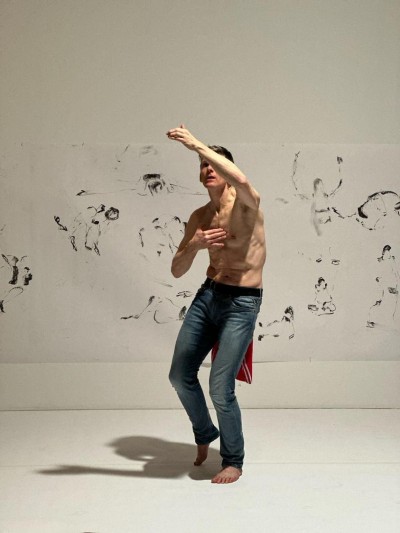 As part of the Centre Culturel Irlandais’ programming for the Paris Olympic year, its director Nora Hickey M’Sichili has assembled an exhibition on Gaelic Sports in the centre. It’s the third in a series of art and sport exhibitions she’s programmed there this year and the Gaelic Games focus meant she invited me to present my GAA dance films, Match and Abú alongside beautiful work by photographer Amelia Stein, designers Camán and Co., sound artist Úna Monaghan, photographer Paul Carroll and visual artist James L. Hayes. It’s always a privilege and a pleasure to insert dance into these contexts and I was delighted to have Match and Abú resonating with the work around it, whether it was the shared warrior attitude of Erin, the young camogie player in Abú, and the soldiers in Amelia Stein’s portraits, or the green grass of pitches in Paul Carroll’s photos and Croke Park in Match, or indeed the vibrant team colours in Camán and Co’s design and the kit on the dancers.
As part of the Centre Culturel Irlandais’ programming for the Paris Olympic year, its director Nora Hickey M’Sichili has assembled an exhibition on Gaelic Sports in the centre. It’s the third in a series of art and sport exhibitions she’s programmed there this year and the Gaelic Games focus meant she invited me to present my GAA dance films, Match and Abú alongside beautiful work by photographer Amelia Stein, designers Camán and Co., sound artist Úna Monaghan, photographer Paul Carroll and visual artist James L. Hayes. It’s always a privilege and a pleasure to insert dance into these contexts and I was delighted to have Match and Abú resonating with the work around it, whether it was the shared warrior attitude of Erin, the young camogie player in Abú, and the soldiers in Amelia Stein’s portraits, or the green grass of pitches in Paul Carroll’s photos and Croke Park in Match, or indeed the vibrant team colours in Camán and Co’s design and the kit on the dancers.
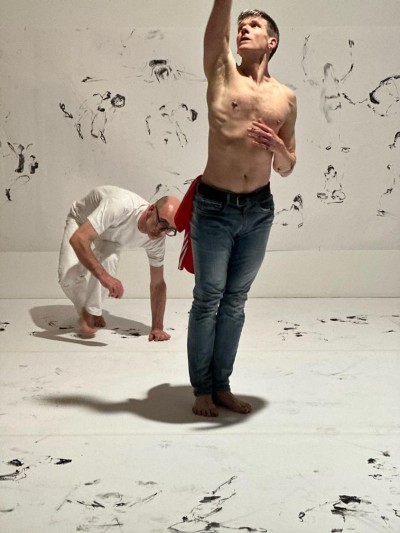
For the exhibition opening, Nora invited me to present with visual artist Gabriel Schmitz again another version of the dance and drawing encounter we had performed for an invited audience at CCI in June. I realised as I was preparing to introduce the event that I’ve known Gabriel since before I started dancing. We were first introduced by my long time friend, the sculptor Tove Hirth when she and Gabriel were both studying at the College of Fine Art in Edinburgh and I was at Oxford. Our paths crossed through Tove over the years but it wasn’t in dance until much later. In 2011, when I was presenting Tabernacle in Barcelona, where Gabriel lives, he came to sketch some of the rehearsals and produced some beautiful paintings with images from the work as inspiration. He continued working with other dancers subsequently and gradually developed a practice of live sketching alongside dance improvisations and performances. Among the dance artists he’s worked with is Elena Giannotti who was in the Tabernacle rehearsals he first visited. You can read some of his text on dancing and drawing in the 2018 entry here:
To paint or draw a dancer is a challenge. And I am not speaking of rendering anatomy in a convincing way, nothing could interest me less. I am speaking of the attempt to catch a glimpse of what is behind the appearance of things. Dance as I experience it comes close to naming the unnamable, rare moments when the veil falls away and the essence of things surfaces, a kind of truth that does not filter through reason. Raw material.
Also among the dancers Gabriel saw in Tabernacle was Matthew Morris whom I could see on the screen in Match as I danced at CCI. I’m increasingly aware of and sensitive to these links across time and space that traverse my dancing body. Remembering and finding again people and experiences that have shaped who I am as I move now.
Standing in the middle of the Gaelic Sports exhibition, I felt strongly that though I hadn’t yet started my dance training when I met Gabriel, I had been trained by the GAA environment I grew up in and that I could feel from the variety of work around me. I’ve been shaped by a culture, by habits, by practices and the movements and emotions they evoke. I try to recognise and move with all of this legacy as I dance.
And as a more concrete nod to that legacy, I wear the Cork jersey that we bought for Match almost twenty years ago. I didn’t wear it n the film but we did use them in our live performances. The jersey has been to Italy, China, London, Cyprus, Spain and now France.
The photos above are from Olivier Debienne. And this video is from Iranian choreographer and film-maker Tanin Torabi, whom I haven’t see since she did her MA in Limerick. More connections across space and time.

